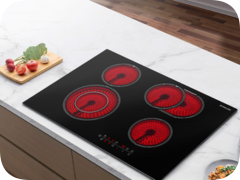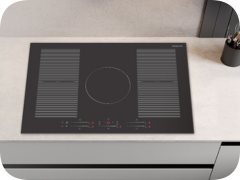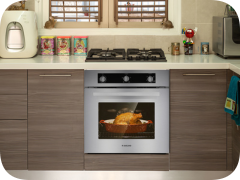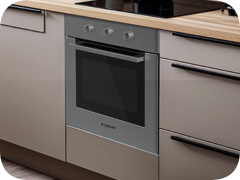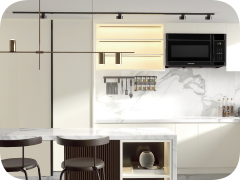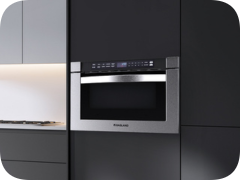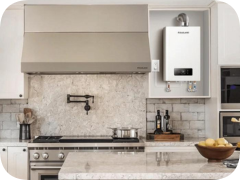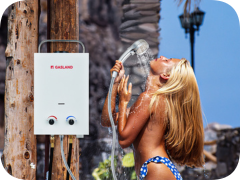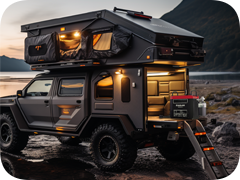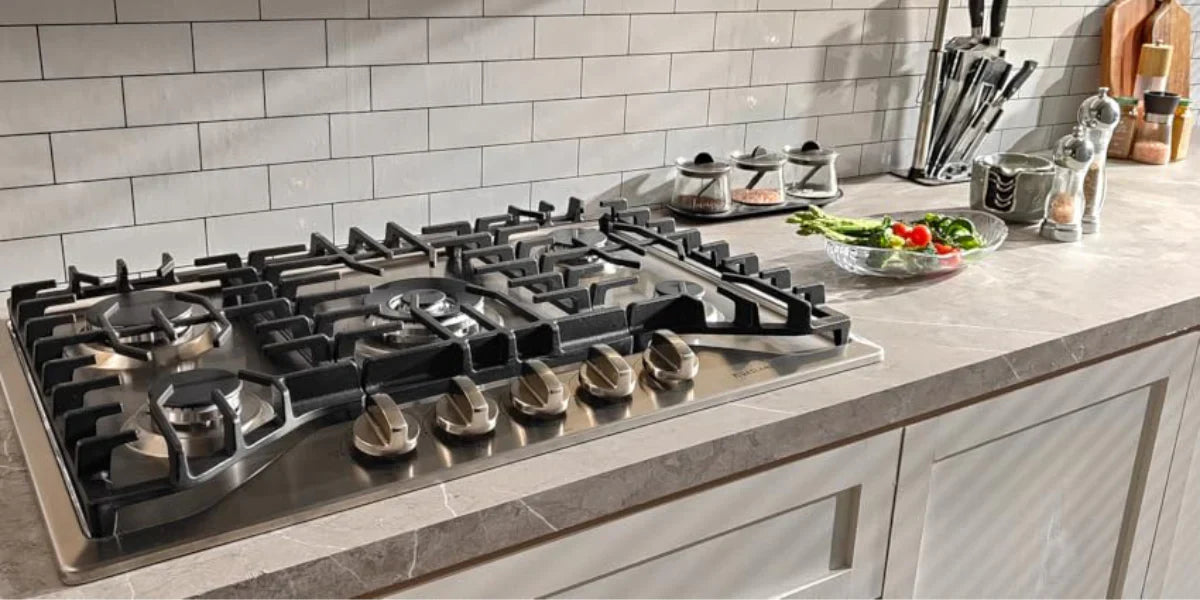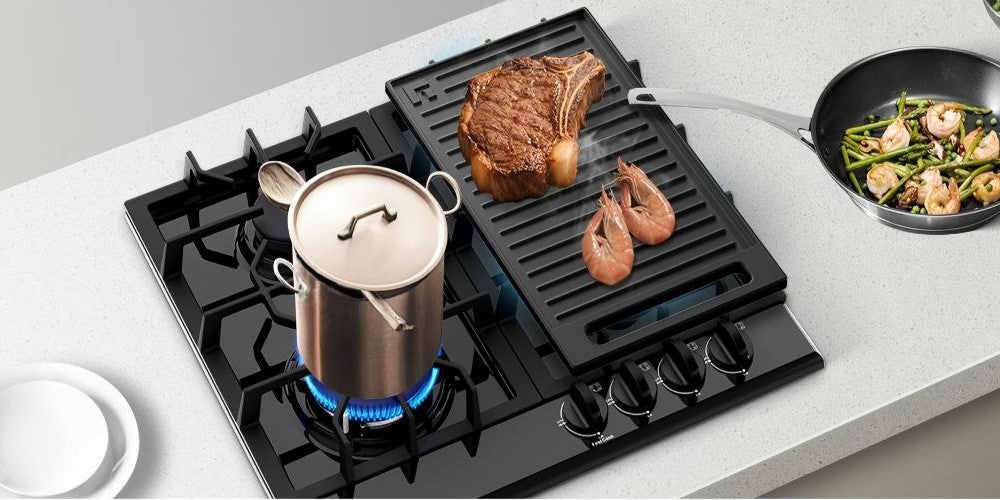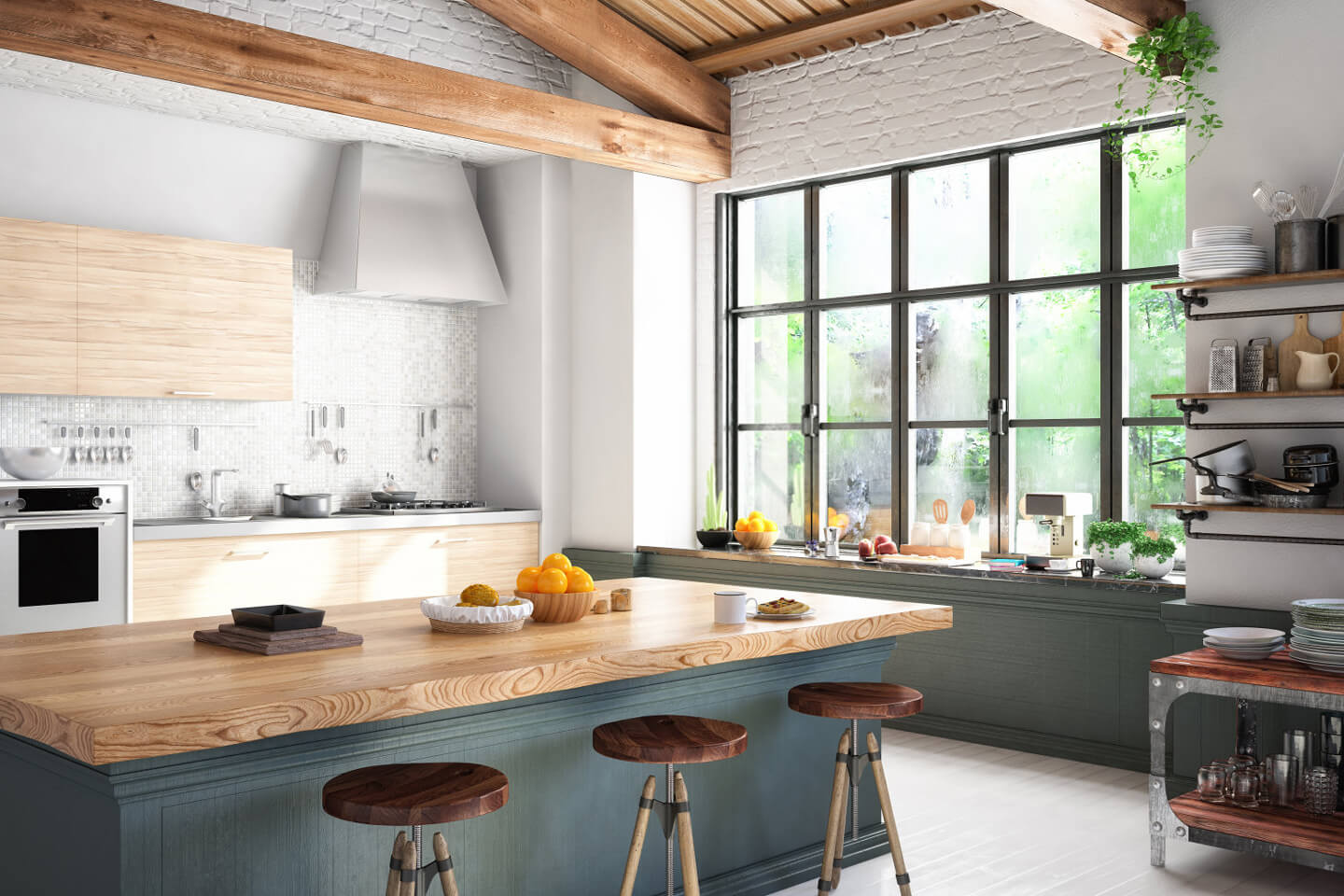-
Altitude lowers the boiling point and speeds evaporation; expect longer cook times and drier pans.
-
Dial in adjusting burner flame, pan choice, lids, and sequencing for reliable results.
-
Hardware matters: stable grates, strong ventilation, and (for LP) correct propane adjustments.
-
For appliance shopping, consider GASLAND options that balance power and control on a mountain-home gas cooktop.
Why altitude changes cooking
At elevation, the lower boiling point of water (because of air pressure effects on cooking) means liquids simmer at a cooler temperature, so braises, beans, and pasta need longer cook times. Meanwhile, drier air and a brisker breeze through homes can bump water evaporation rates, so sauces reduce faster and pans dry out more easily. In short, cooking energy at altitude must be managed differently: more attentive preheating, smarter flame control, and timely lid use. These realities shape smart thin air cooking strategies for mountain kitchens.
how to adjust gas cooktop for high altitude
Here’s how to adjust gas cooktop for high altitude without guesswork: start with precise adjusting burner flame at the low end. You want a stable, blue flame that doesn’t lift or sputter—classic flame stability issues are more common up high due to thinner oxygen.
Practical steps
-
Low-flame calibration: Turn the knob to the lowest setting where the flame stays blue and continuous around the burner ports; if it gutters or lifts, increase slightly.
-
Pan placement: Keep flame tips just under the cookware base, not climbing the sides—this protects handles and prevents scorching.
-
Use lids intelligently: A lid raises surface temperature and retains moisture; crack it only to control texture.
-
Stagger ingredients: Heavier, wetter items first to re-stabilize pan temp, then delicate items at the end.
Cooking adjustments for high elevations
The most reliable cooking adjustments for high elevations fall into time, temperature, and technique:
-
Time: Plan on longer cook times for boiling, braising, and legumes. Start with +15–25% and adjust by doneness.
-
Temperature: More vigorous simmer (slightly higher flame) compensates for the cooler boil.
-
Technique: Use lids to offset heat loss; reduce batch size so you don’t crash pan temperature.
-
Recipe tweaks: Expect high-altitude recipe changes—a bit more liquid for long simmers and slightly higher oven temps for baked items (when your recipe allows).
High altitude gas stove setup
A safe, efficient high altitude gas stove setup starts with correct fuel configuration and strong airflow management.
-
Fuel & regulators: If you’re on LP, confirm propane adjustments (orifices, regulator settings) per the manual—misconfigurations can cause yellow flame tips and soot.
-
Ventilation: Mountain air can be brisk, but you still need a hood that captures steam and aerosols across the full burner width—key for high-output simmer control and safety.
-
Grates & stability: Continuous, sturdy grates help with big pots (soups, stocks) and reduce spills when lifting lids.
-
Appliance fit: Choose mountain home appliances with a strong power burner and smooth low-flame control—both ends matter up high.
When you’re comparing models, browse a reliable gas cooktop lineup from GASLAND to pair power, control, and ventilation compatibility.
A quick note on safety: Always follow the installation manual and local code; if flames lift off the ports or “ghost,” shut down, ventilate, and have a pro inspect pressure and air mix.
Tips for boiling at high altitude
Use these tips for boiling at high altitude to keep weeknights simple:
-
Lid-on advantage: Lid stays on for faster pasta water and beans; remove briefly to prevent boil-overs.
-
Salt & size: Salt as usual; select wider pots to boost surface heating and evaporation control.
-
Stage your salt & starchy water: At altitude, starch release can feel different; save a ladle of water for sauce binding before draining.
-
Don’t chase monster flames: Past a point, more flame just licks the sides. Balance heat with pot contact and lids.
High elevation kitchen challenges
Common high elevation kitchen challenges include:
-
Flame stability issues on low settings (address with careful knob tuning and clean ports).
-
Faster reductions from higher water evaporation rates (watch sauces closely).
-
Slower beans, grains, and custards due to cooler boiling—expect longer cook times.
-
Managing smoke and moisture in winter—strong ventilation beats open windows.
Best gas cooktops for mountain homes
When you compare models, the best gas cooktops for mountain homes combine a confident power burner with an ultra-reliable low simmer. On a modern gas cooktop from GASLAND, look for:
-
Top-end headroom: A 15k–18k BTU class burner for big stockpots and quick recovery after adding cold food.
-
Low-end finesse: Smooth, even flame at the bottom of the dial to prevent scorching delicate sauces at altitude.
-
Even heat distribution: Burner patterns that spread energy under the pan base for fewer hot spots.
-
Vent pairing: A hood that matches your layout and cooking style for reliable capture.
FAQs
Q1: Why do my sauces reduce so fast?
At altitude, cooler boils + drier air raise water evaporation rates. Use lids, lower the flame slightly, and add a splash of stock or water to hit your texture.
Q2: My low flame keeps sputtering—what now?
Clean burner ports, verify regulator settings (especially for propane adjustments), and fine-tune adjusting burner flame until the flame rings stay steady and blue.
Q3: Do I need a special pan set for altitude?
Not special, but heavier bases help stabilize temperature swings. Pair with lids and avoid overcrowding.
Q4: Can I just turn everything to high?
More flame isn’t always better. You’ll waste fuel and scorch edges. Balance flame height with pan size and use the lid to do the heavy lifting.
CTA
Want help matching your elevation and cooking style to the right burner mix and hood size? Tell me your altitude, kitchen size, and must-cook dishes—I’ll map you to a mountain-ready gas cooktop from GASLAND.
Keep reading: Using a Wok on a Gas Cooktop: Techniques and Best Practices — dial in flame control, sequencing, and ventilation for high-heat stir-fry success.
👉 https://gaslandchef.com/blogs/news/using-a-wok-on-a-gas-cooktop-techniques-and-best-practices


